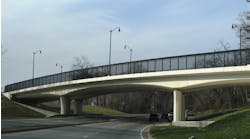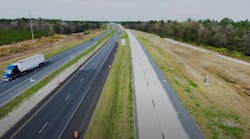Get ready for the future of transportation.
From advances in driving simulators to crack-resistant concrete to nanoscale technologies for inhibiting corrosion in structures, the Federal Highway Administration’s (FHWA) Exploratory Advanced Research (EAR) Program is conducting long-term, high-risk research with a high payoff potential. The program addresses underlying gaps faced by applied highway research programs, anticipates emerging issues with national implications and reflects broad transportation industry goals and objectives.
Launched with funding authorized under the 2005 Safe, Accountable, Flexible, Efficient Transportation Equity Act—A Legacy for Users (SAFETEA-LU), the EAR Program currently focuses on areas including Integrated Highway System Concepts, Nanoscale Research, Human Behavior and Travel Choices, New Technology and Advanced Policies for Energy and Resource Conservation, Information Sciences, Breakthrough Concepts in Material Science, and Technology for Assessing Performance. Across these focus areas, researchers are looking at innovative solutions to improve the safety, reliability and resilience of the nation’s highway system; reduce congestion; increase sustainability; and improve the livability of communities.
Sense of what’s out there
One new project, for example, aims to develop new intelligent self-sensing concrete pavement that can monitor its own structural health by continuously detecting internal stress-level changes. The program’s research on crack-resistant concrete, meanwhile, is exploring the use of stress-relaxing cementitious composites to introduce controlled cracking on a nano- to micrometer scale, thereby lowering the tensile stresses in concrete to a level where they will not cause macroscale cracking or curling. To download a fact sheet on this project, visit www.fhwa.dot.gov/advancedresearch/pubs/09065.cfm.
Also under way is a project to make driving simulators a more reliable tool for highway and traffic engineers, allowing engineers to consider complex driver behavior in their designs. The project’s goal is to provide a systematic, design-centered approach to matching simulator data to on-road data, filling a longstanding gap recognized by the driving-simulation research community.
Advancing knowledge and understanding of how drivers acquire and act on visual information while driving at night is the goal of an ongoing project titled “Increased Understanding of Driver Visibility Requirements.” Researchers aim to develop a revolutionary software design tool that could be used to evaluate roadways, identify possible problem areas and improve roadway design and safety. In the long term, the research also could advance the vision of a future highway system that incorporates autonomous vehicles traveling under supervisory human control. To learn more, visit www.fhwa.dot.gov/advancedresearch/pubs/seedarkear.cfm.
Researchers also are looking at new opportunities to use nanotechnology to advance highway materials and construction. Nanotechnology is the understanding and control of matter at dimensions between approximately 1 and 100 nanometers, with 1 nanometer being 100,000 times smaller than the width of a human hair. Currently, less than one-tenth of 1% of the $1.5 billion the federal government spends annually on nanoscale research is directly related to highway research. Opportunities to advance strategic nanoscale research for highways include an EAR Program project to develop technologies for new in-situ materials and methods that can be used in repairing or retrofitting structures to inhibit corrosion. For more information about highway applications for nanotechnology, download a copy of FHWA’s booklet “Nanoscale Approaches for Highway Research,” which is available online at www.fhwa.dot.gov/advancedresearch/pubs/10033/index.cfm.


